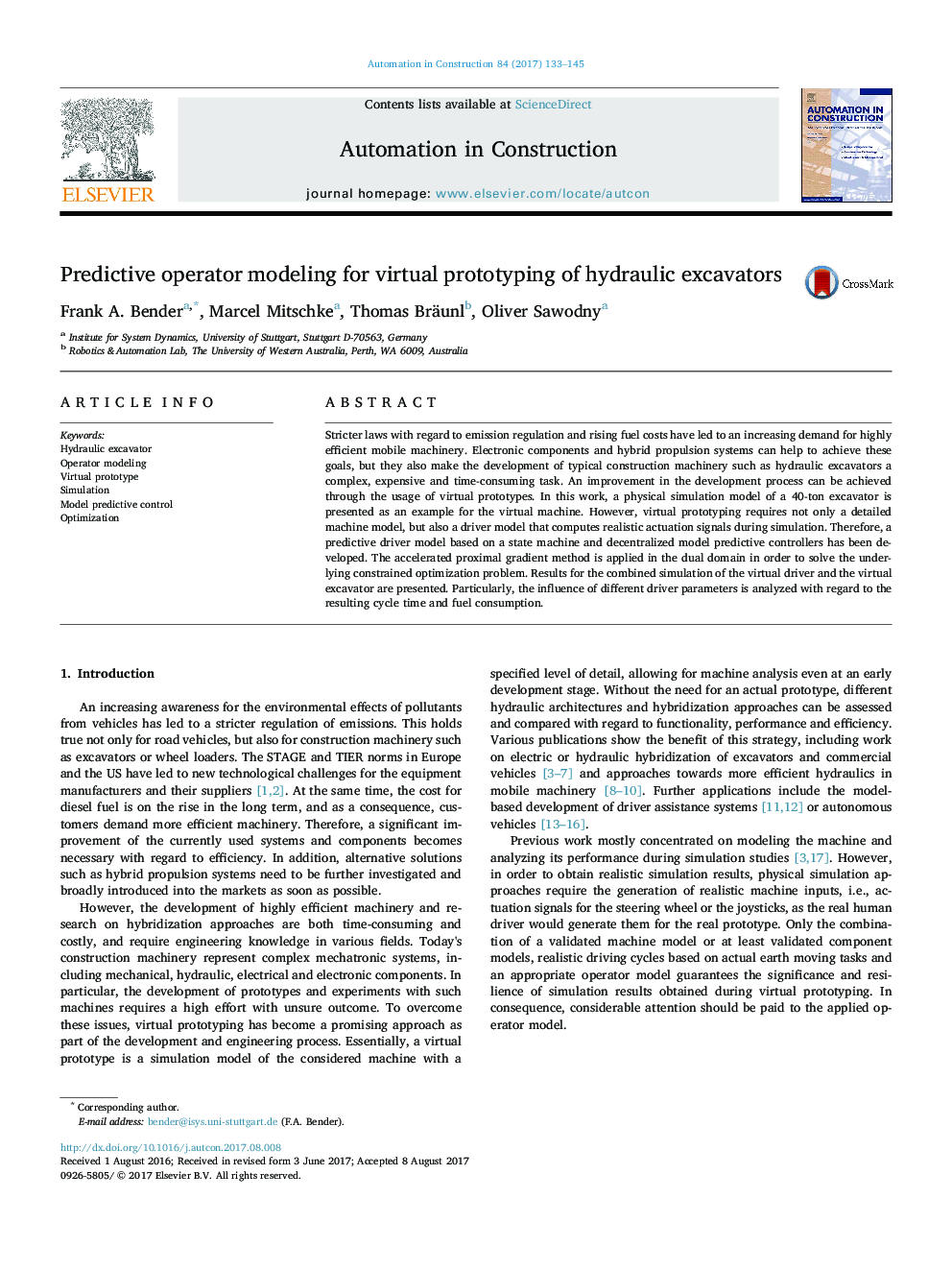| Article ID | Journal | Published Year | Pages | File Type |
|---|---|---|---|---|
| 6479065 | Automation in Construction | 2017 | 13 Pages |
•Mathematical model of a 40-ton hydraulic excavator for virtual prototyping•Operator modeling based on a state machine and model predictive controllers•Optimization problem is solved with the accelerated proximal gradient method•Presentation of simulation results for the combined virtual excavator and virtual operator•Comparison of different virtual operator types with regard to fuel efficiency
Stricter laws with regard to emission regulation and rising fuel costs have led to an increasing demand for highly efficient mobile machinery. Electronic components and hybrid propulsion systems can help to achieve these goals, but they also make the development of typical construction machinery such as hydraulic excavators a complex, expensive and time-consuming task. An improvement in the development process can be achieved through the usage of virtual prototypes. In this work, a physical simulation model of a 40-ton excavator is presented as an example for the virtual machine. However, virtual prototyping requires not only a detailed machine model, but also a driver model that computes realistic actuation signals during simulation. Therefore, a predictive driver model based on a state machine and decentralized model predictive controllers has been developed. The accelerated proximal gradient method is applied in the dual domain in order to solve the underlying constrained optimization problem. Results for the combined simulation of the virtual driver and the virtual excavator are presented. Particularly, the influence of different driver parameters is analyzed with regard to the resulting cycle time and fuel consumption.
